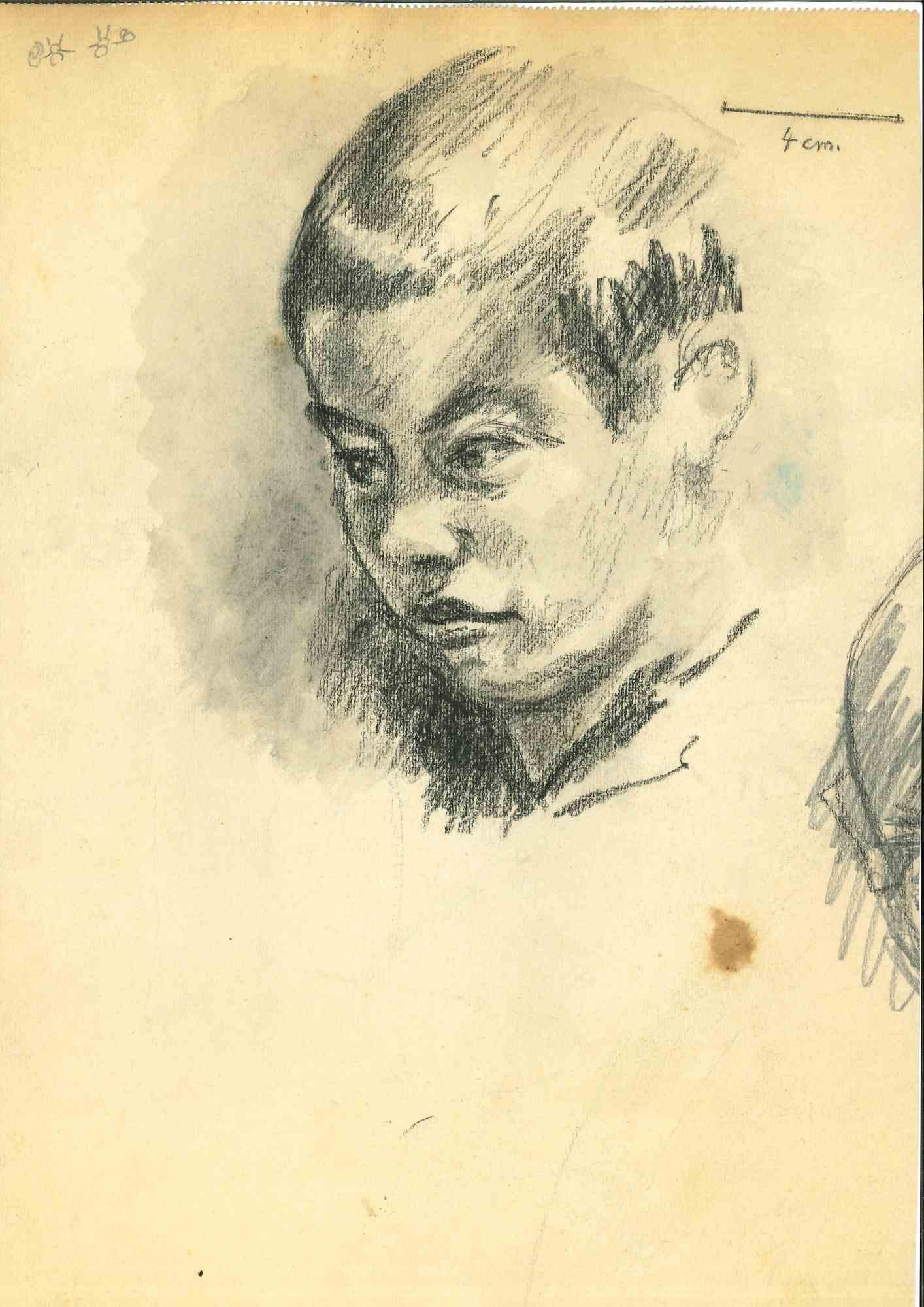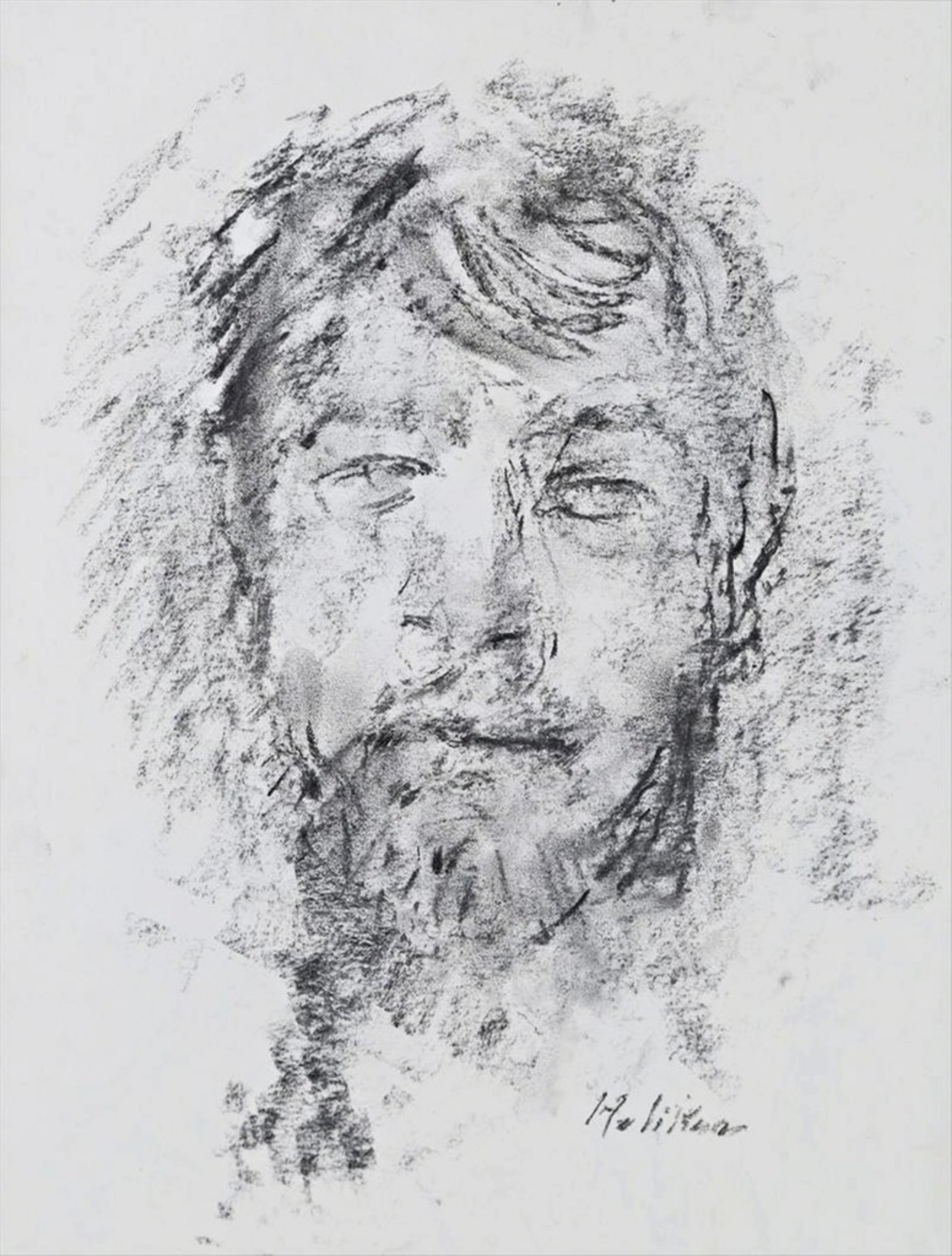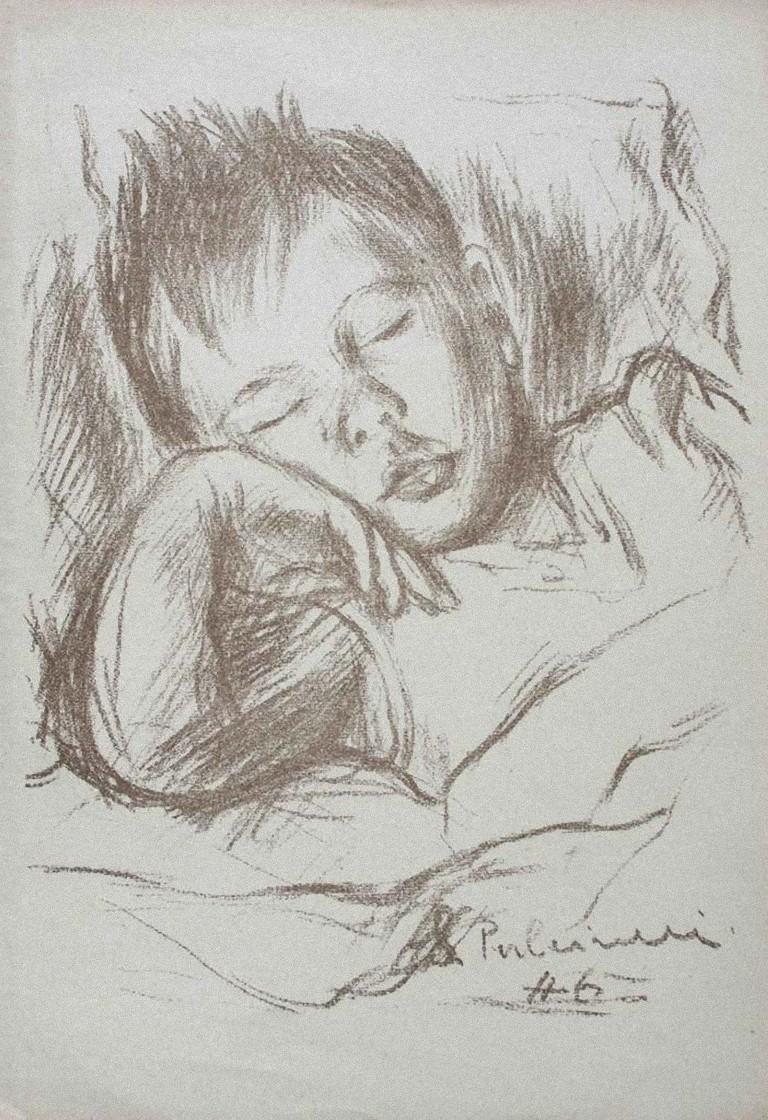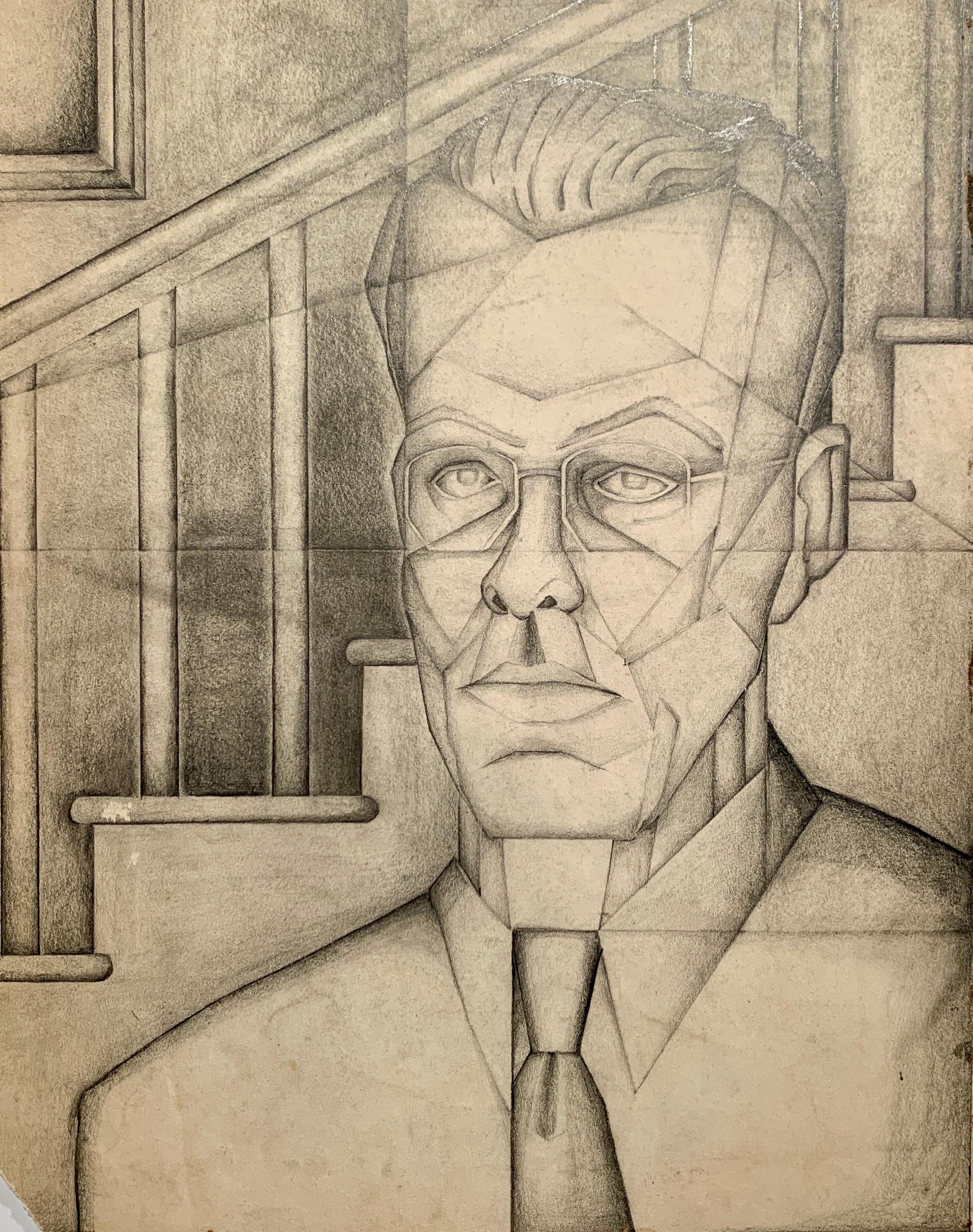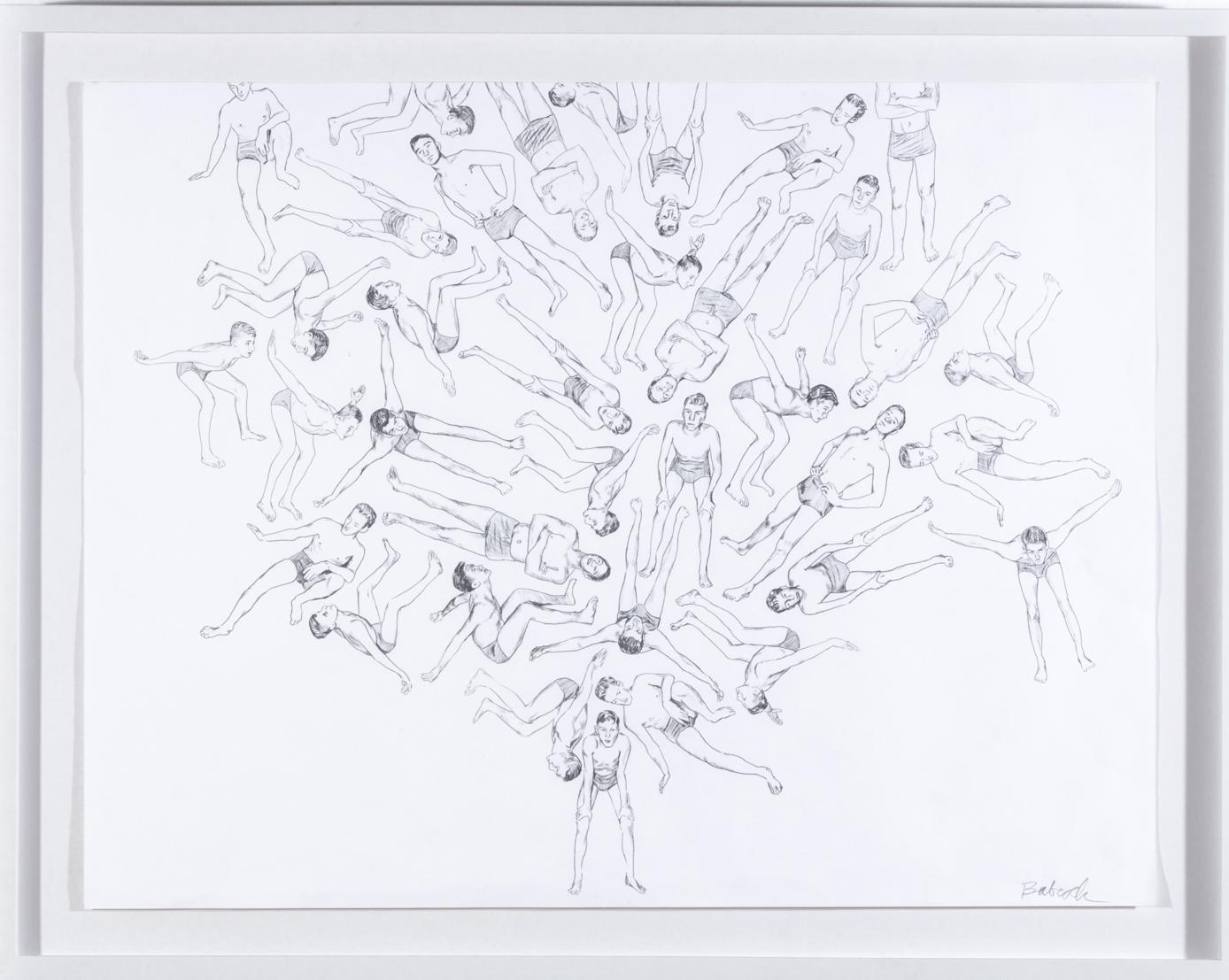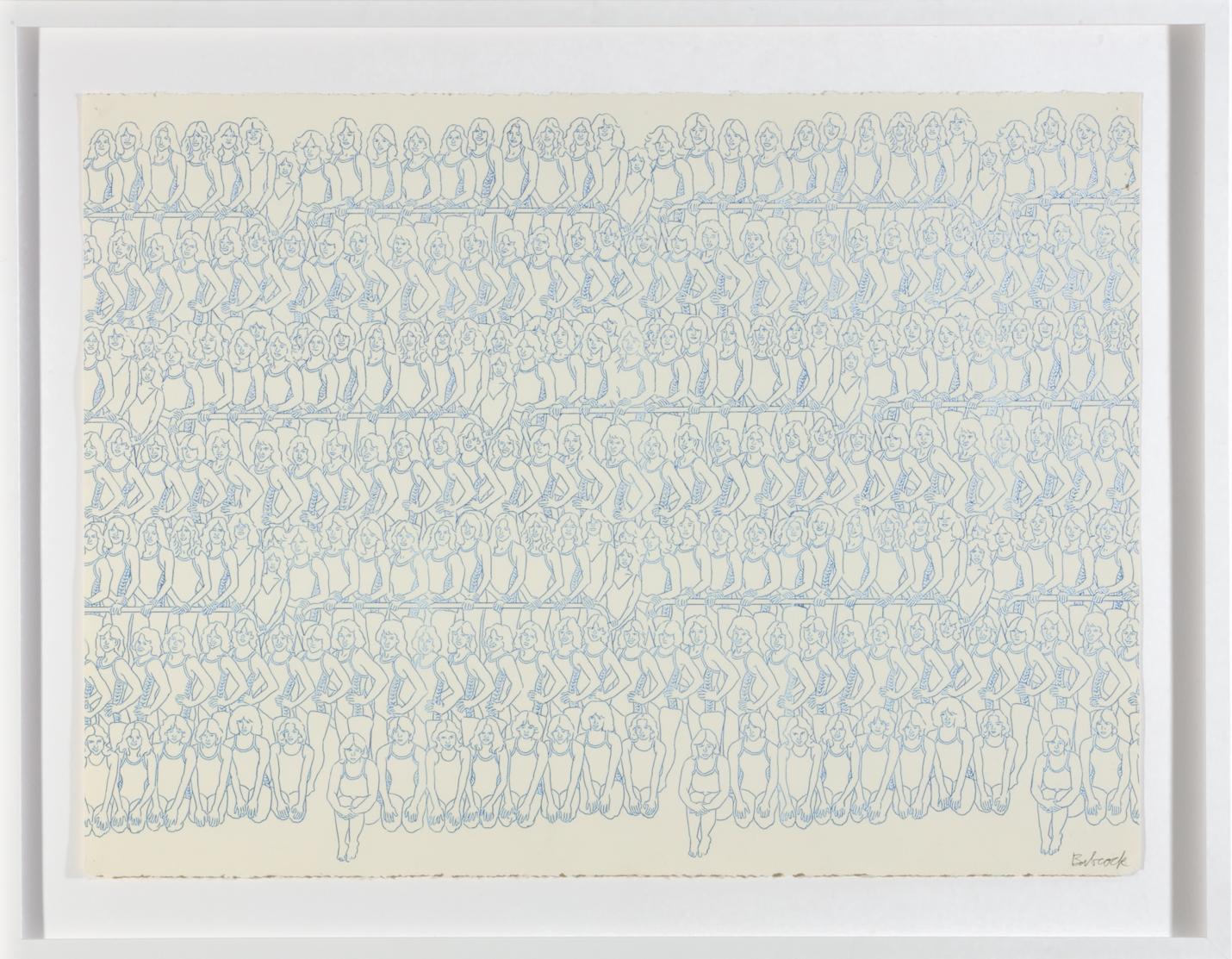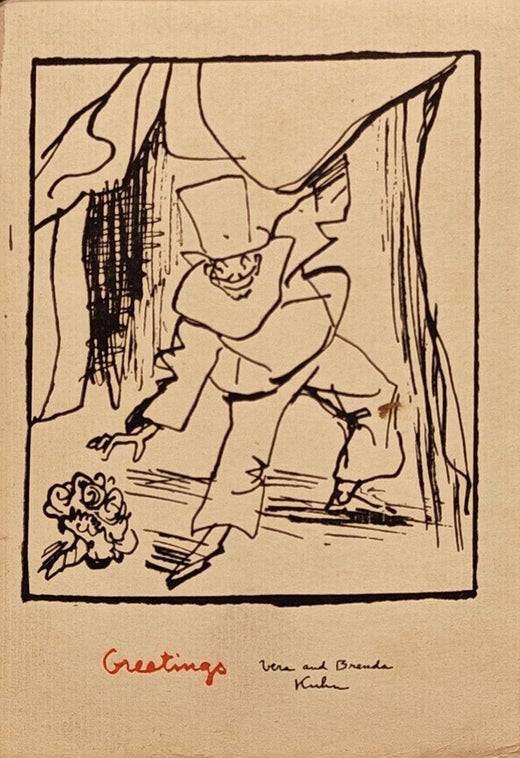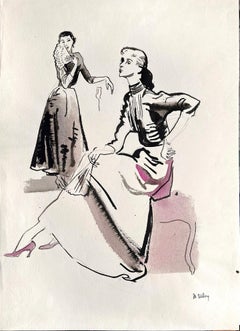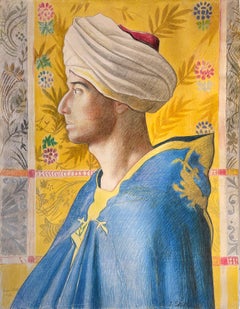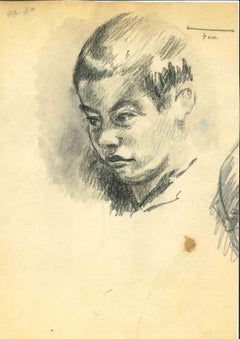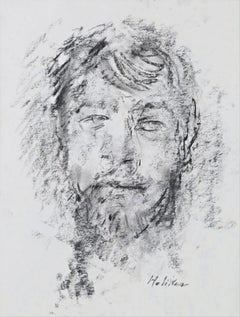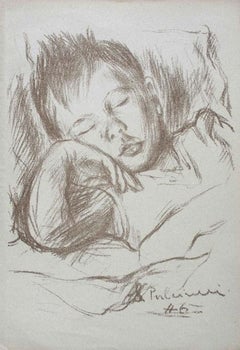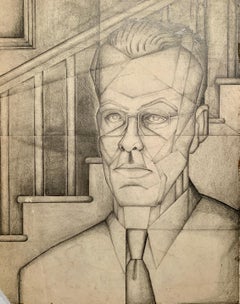Items Similar to Circus girl reclining
Want more images or videos?
Request additional images or videos from the seller
1 of 8
Walt KuhnCircus girl reclining1929
1929
About the Item
Signed and dated center right, Seam down center where two sheets attached is original. Some slight surface smudging outside figure area .
- Creator:Walt Kuhn (1877-1949, American)
- Creation Year:1929
- Dimensions:Height: 12.5 in (31.75 cm)Width: 19 in (48.26 cm)
- Medium:
- Movement & Style:
- Period:
- Condition:
- Gallery Location:Miami, FL
- Reference Number:1stDibs: LU38533551761
Walt Kuhn
Walt Kuhn (1877-1949) He was associated with "The Eight" and with Arthur B. Davies, was a the key figure in forming the American Association of painters and Sculptors that organized the Armory Show of 1913 that introduced modernist European art to America. Kuhn was executive secretary of the Association and traveled abroad to select entries for the Armory Show. He was strongly influenced by Cezanne which is evident in many of his paintings. Like Cezanne, he destroyed many of his paintings, keeping only about a dozen a year. He was born in Brooklyn, New York and in 1900 first used the name Walt when illustrating magazines in San Francisco. He studied at the Royal Academy in Munich from 1901 to 1903 and returned to New York where he worked as a cartoonist and magazine illustrator. In the permanent collection of most major museums worldwide. His record price for a painting to date is 1.6 Million dollars.
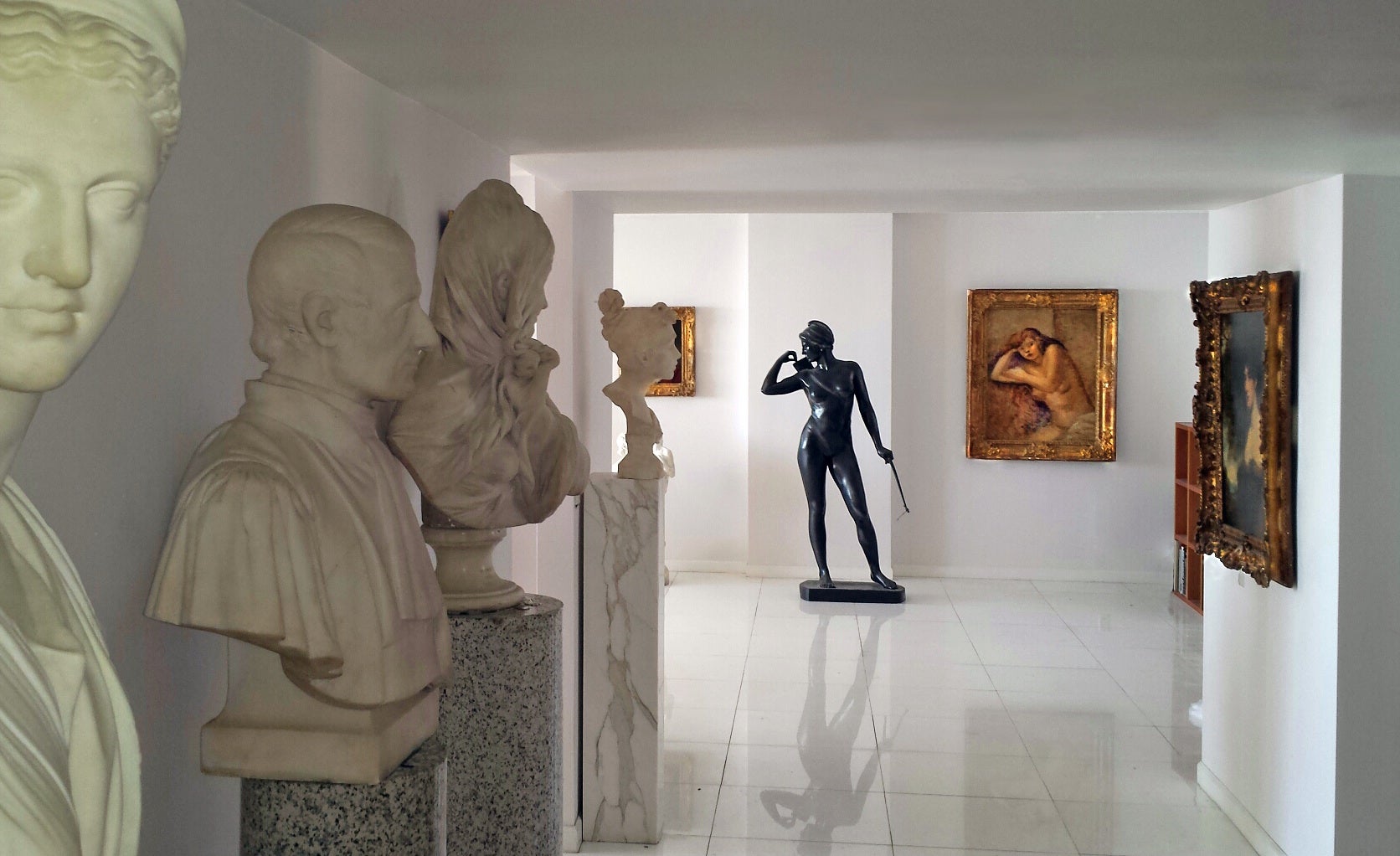
About the Seller
4.9
Vetted Professional Seller
Every seller passes strict standards for authenticity and reliability
Established in 2005
1stDibs seller since 2016
111 sales on 1stDibs
Typical response time: 1 hour
- ShippingRetrieving quote...Shipping from: Miami, FL
- Return Policy
Authenticity Guarantee
In the unlikely event there’s an issue with an item’s authenticity, contact us within 1 year for a full refund. DetailsMoney-Back Guarantee
If your item is not as described, is damaged in transit, or does not arrive, contact us within 7 days for a full refund. Details24-Hour Cancellation
You have a 24-hour grace period in which to reconsider your purchase, with no questions asked.Vetted Professional Sellers
Our world-class sellers must adhere to strict standards for service and quality, maintaining the integrity of our listings.Price-Match Guarantee
If you find that a seller listed the same item for a lower price elsewhere, we’ll match it.Trusted Global Delivery
Our best-in-class carrier network provides specialized shipping options worldwide, including custom delivery.More From This Seller
View AllFashion Illustration with Two Leggy Models in Monochromatic Greys
Located in Miami, FL
Two elegant and leggy models are rendered and meticulously designed in this illustration for Geoffrey Beene. Miyake's composition is one model as two or two models as one. We see th...
Category
1960s Contemporary Figurative Drawings and Watercolors
Materials
Watercolor, Permanent Marker, Carbon Pencil
Surprised Woman with Cactus 1920s Female Illustrator
By Susan Flint
Located in Miami, FL
The postman's delivery of a limp cactus creates a big emotional response the female recipient. Most likely an interior illustration for a newsstand magazine. Signed lower right Sus...
Category
1930s American Modern Figurative Drawings and Watercolors
Materials
Paper, Graphite
Mid- Century Fashion Illustration - Neiman Marcus ?
By Marjorie Ullberg
Located in Miami, FL
1950's elegant fashion models pose depicted for a designer clothing line for a major San Francisco department store - Perhaps Neiman Marcus. Estate ...
Category
1950s Modern Figurative Drawings and Watercolors
Materials
Watercolor, Pencil
Middle Eastern Man with Turban and Blue Cloak in Profile against Yellow
By Joseph Stella
Located in Miami, FL
Portrait in primary blues and yellow of perhaps a Persian man. He is in profile set against a decorative yellow background with floral elements. The work...
Category
1940s Modern Portrait Drawings and Watercolors
Materials
Pencil, Paper, Color Pencil
Black Panther Trials - Civil Rights Movement Police Violence African American
Located in Miami, FL
The Black Panther Trials - In this historically significant work, African American Artist Vicent D. Smith functions as an Art Journalist/ Court Reporter as much as a
Artist. Here, he depicts, in complete unity, 21 Black Panther Protestors raising their fist of defiance at the White Judge. Smith's composition is about utter simplicity, where the Black Panther Protestors are symmetrically lined up in a confrontation with a Judge whose size is exaggerated in scale. Set against a stylized American Flag, the supercilious Judge gazes down as the protesters as their fists thrust up. Signed Vincent lower right. Titled Panter 21. Original metal frame. Tape on upper left edge of frame. 255 . Panther 21. Framed under plexi.
_____________________________
From Wikipedia
In 1969-1971 there was a series of criminal prosecutions in New Haven, Connecticut, against various members and associates of the Black Panther Party.[1] The charges ranged from criminal conspiracy to first-degree murder. All charges stemmed from the murder of 19-year-old Alex Rackley in the early hours of May 21, 1969. The trials became a rallying-point for the American Left, and marked a decline in public support, even among the black community, for the Black Panther Party
On May 17, 1969, members of the Black Panther Party kidnapped fellow Panther Alex Rackley, who had fallen under suspicion of informing for the FBI. He was held captive at the New Haven Panther headquarters on Orchard Street, where he was tortured and interrogated until he confessed. His interrogation was tape recorded by the Panthers.[2] During that time, national party chairman Bobby Seale visited New Haven and spoke on the campus of Yale University for the Yale Black Ensemble Theater Company.[3] The prosecution alleged, but Seale denied, that after his speech, Seale briefly stopped by the headquarters where Rackley was being held captive and ordered that Rackley be executed. Early in the morning of May 21, three Panthers – Warren Kimbro, Lonnie McLucas, and George Sams, one of the Panthers who had come East from California to investigate the police infiltration of the New York Panther chapter, drove Rackley to the nearby town of Middlefield, Connecticut. Kimbro shot Rackley once in the head and McLucas shot him once in the chest. They dumped his corpse in a swamp, where it was discovered the next day. New Haven police immediately arrested eight New Haven area Black Panthers. Sams and two other Panthers from California were captured later.
Sams and Kimbro confessed to the murder, and agreed to testify against McLucas in exchange for a reduction in sentence. Sams also implicated Seale in the killing, telling his interrogators that while visiting the Panther headquarters on the night of his speech, Seale had directly ordered him to murder Rackley. In all, nine defendants were indicted on charges related to the case. In the heated political rhetoric of the day, these defendants were referred to as the "New Haven Nine", a deliberate allusion to other cause-celebre defendants like the "Chicago Seven".
The first trial was that of Lonnie McLucas, the only person who physically took part in the killing who refused to plead guilty. In fact, McLucas had confessed to shooting Rackley, but nonetheless chose to go to trial.
Jury selection began in May 1970. The case and trial were already a national cause célèbre among critics of the Nixon administration, and especially among those hostile to the actions of the FBI. Under the Bureau's then-secret "Counter-Intelligence Program" (COINTELPRO), FBI director J. Edgar Hoover had ordered his agents to disrupt, discredit, or otherwise neutralize radical groups like the Panthers. Hostility between groups organizing political dissent and the Bureau was, by the time of the trials, at a fever pitch. Hostility from the left was also directed at the two Panthers cooperating with the prosecutors. Sams in particular was accused of being an informant, and lying to implicate Seale for personal benefit.
In the days leading up to a rally on May Day 1970, thousands of supporters of the Panthers arrived in New Haven individually and in organized groups. They were housed and fed by community organizations and by sympathetic Yale students in their dormitory rooms. The Yale college dining halls provided basic meals for everyone. Protesters met daily en masse on the New Haven Green across the street from the Courthouse (and one hundred yards from Yale's main gate). On May Day there was a rally on the Green, featuring speakers including Jean Genet, Abbie Hoffman, Jerry Rubin, and John Froines (an assistant professor of chemistry at the University of Oregon). Teach-ins and other events were also held in the colleges themselves.
Towards midnight on May 1, two bombs exploded in Yale's Ingalls Rink, where a concert was being held in conjunction with the protests.[4] Although the rink was damaged, no one was injured, and no culprit was identified.[4]
Yale chaplain William Sloane Coffin stated, "All of us conspired to bring on this tragedy by law enforcement agencies by their illegal acts against the Panthers, and the rest of us by our immoral silence in front of these acts," while Yale President Kingman Brewster Jr. issued the statement, "I personally want to say that I'm appalled and ashamed that things should have come to such a pass that I am skeptical of the ability of a Black revolutionary to receive a fair trial anywhere in the U.S." Brewster's generally sympathetic tone enraged many of the university's older, more conservative alumni, heightening tensions within the school community.
As tensions mounted, Yale officials sought to avoid deeper unrest and to deflect the real possibility of riots or violent student demonstrations. Sam Chauncey has been credited with winning tactical management on behalf of the administration to quell anxiety among law enforcement and New Haven's citizens, while Kurt Schmoke, a future Rhodes Scholar, mayor of Baltimore, MD and Dean of Howard University School of Law, has received kudos as undergraduate spokesman to the faculty during some of the protest's tensest moments. Ralph Dawson, a classmate of Schmoke's, figured prominently as moderator of the Black Student Alliance at Yale (BSAY).
In the end, compromises between the administration and the students - and, primarily, urgent calls for nonviolence from Bobby Seale and the Black Panthers themselves - quashed the possibility of violence. While Yale (and many other colleges) went "on strike" from May Day until the end of the term, like most schools it was not actually "shut down". Classes were made "voluntarily optional" for the time and students were graded "Pass/Fail" for the work done up to then.
Trial of McLucas
Black Panther trial sketch...
Category
1970s American Modern Figurative Drawings and Watercolors
Materials
Watercolor, Pen, Pencil, Paper
African Children Suffer Famine and Despair in Hot Colors - Africa is Bleeding
By Victor Olson
Located in Miami, FL
An intense and powerful study of five undernourished and perhaps starving African children partly superimposed and partly integrated into the silhouette of the African continent...
Category
1970s Realist Figurative Drawings and Watercolors
Materials
Watercolor, Graphite
You May Also Like
The Portrait Of A Boy - Drawing by Mino Maccari - 1950s
By Mino Maccari
Located in Roma, IT
The Portrait Of A Boy is an Original Drawing in pencil on creamy-colored paper realized by Mino Maccari in the mid-20th century.
Hand-signed by the artist on the lower on the rear.
...
Category
1950s Modern Figurative Drawings and Watercolors
Materials
Carbon Pencil
Self Portrait (original signed unique charcoal drawing) Kraushaar Gallery label
By John Heliker
Located in New York, NY
John Heliker
Self Portrait, 1991
Charcoal Pencil on Paper (with original Kraushaar Galleries label verso)
Signed on the front
bears the original KRAUSHAAR GALLERIES label on the verso on the frame
Vintage metal frame included
Self portrait done in charcoal pencil by distinguished American artist John Heliker. Hand signed on the front
This work is framed - bears the label of the renowned KRAUSHAAR GALLERIES on the verso.
Image size: 13 inches by 10 inches;
Framed: 18 1/2 inches by 14 1/2 inches
About John Heliker from The New York Times Obituary, 2000 (Roberta Smith)
John Heliker, a painter and teacher who was a fixture of the New York art world for nearly seven decades, died on Tuesday at the Sonojee Estate, a health center in Bar Harbor, Me. He was 91 and had lived in New York during most of his career, spending summers on Cranberry Island...
Category
Late 20th Century Modern Portrait Drawings and Watercolors
Materials
Paper, Charcoal, Carbon Pencil
Sleeping Boy - Carbon Pencil by Silvano Pulcinelli - 1946
By Silvano Pulcinelli
Located in Roma, IT
Sleeping boy is an original lithograph realized by Silvano Pulcinelli, in 1946.
Inclued Passports: 40 x 30 cm
Good Conditions.
Category
1940s Modern Figurative Drawings and Watercolors
Materials
Carbon Pencil
1940s Charcoal and Pencil Portrait of a Man
Located in Arp, TX
Artist Unknown
"Tie and Glasses"
c. 1940s
Charcoal and pencil on paper
13.5"x17" site 19"x23" rustic wood frame
Unsigned
Category
1940s Modern Portrait Drawings and Watercolors
Materials
Charcoal, Paper, Carbon Pencil
Divers
By Jay Alan Babcock
Located in Saint Louis, MO
Jay Alan Babcock is a St. Louis-based graphic designer and painter. His work exhibits his interest in the visual language of Americana, including old ...
Category
2010s American Modern Portrait Drawings and Watercolors
Materials
Carbon Pencil
Swim Team
By Jay Alan Babcock
Located in Saint Louis, MO
Jay Alan Babcock is a St. Louis-based graphic designer and painter. His work exhibits his interest in the visual language of Americana, including old ...
Category
2010s American Modern Portrait Drawings and Watercolors
Materials
Carbon Pencil
Recently Viewed
View AllMore Ways To Browse
Used Recliners
Circus Circus
Modern Recliner
Circus Sign
Circus Antique
Antique Circus Art
Antique Circus Signs
Kuhn Walt
California School
Copy Painting
German War Art
Paris Scene Painting
Contemporary Artists Plates
Andre Artist
Tree Landscape Oil Painting
New Mexico Paintings
Modern House Painting
Artist Self Portrait
